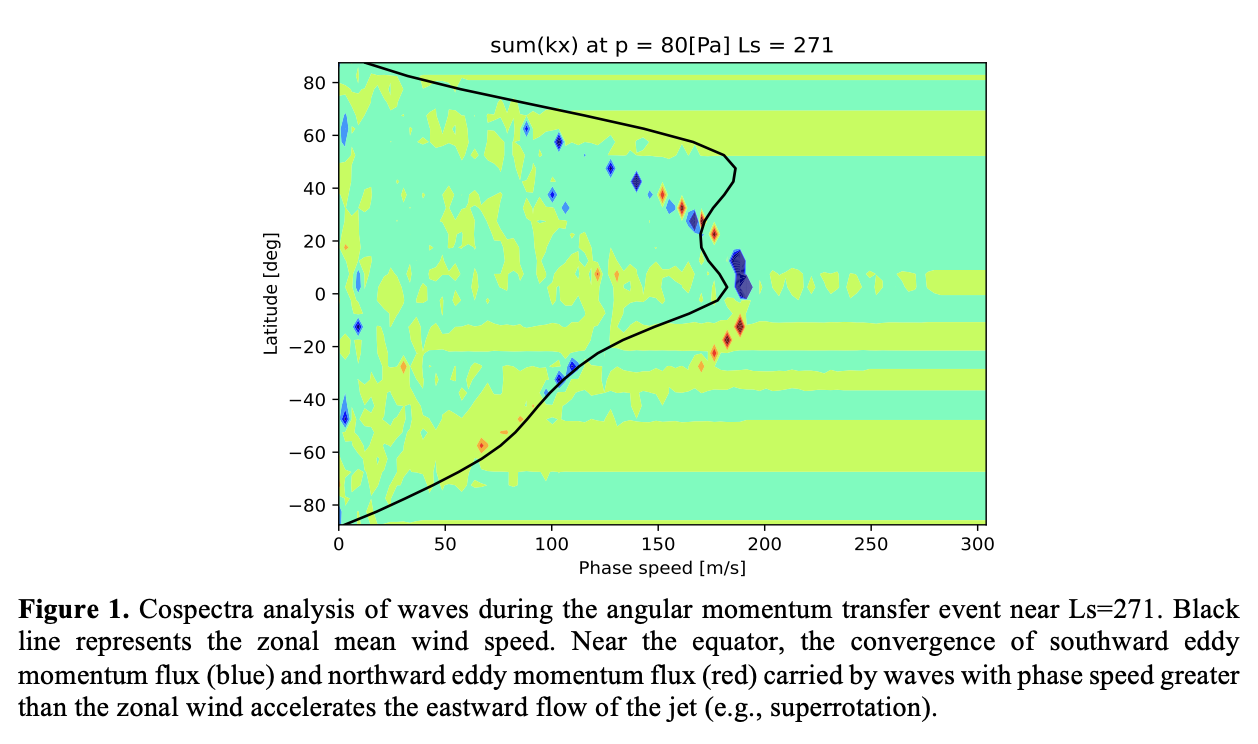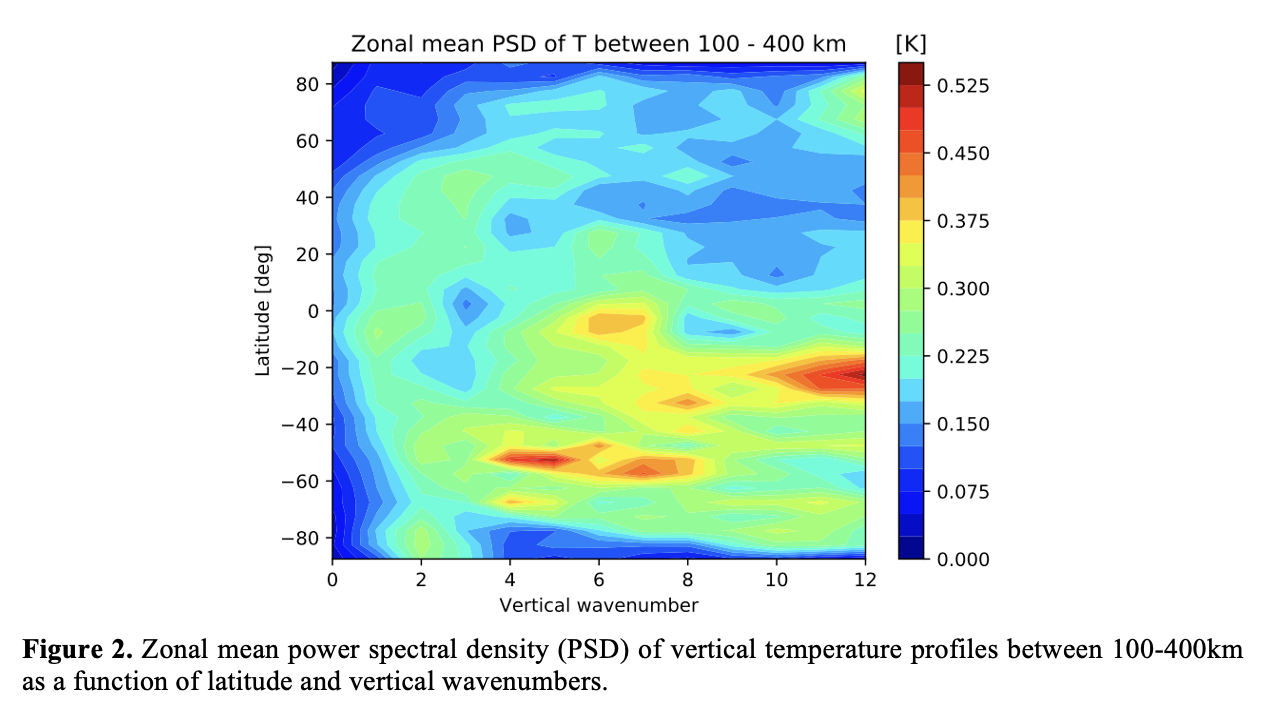Angular Momentum Transfer in Titan’s Stratosphere
- 1Jet Propulsion Laboratory/Caltech, Pasadena, United States of America (cecilia.leung@jpl.nasa.gov)
- 2Aeolis Research
The objective of this study is to identify the dominant atmospheric wave modes driving and maintaining superrotation on Titan, by using a combination of space-time cross spectral wave analysis and spherical harmonic wave analysis techniques.
A defining feature of Titan’s atmospheric circulation is the presence of strong, planet-wide superrotation in the stratosphere. To achieve and sustain equatorial superrotation, angular momentum must be transported up the angular momentum gradient, which can only be accomplished by wave transport [2]. Newman et al. (2011) showed that equatorial superrotation can be maintained via episodic “transfer events,” in which barotropic instability leads to the generation of planetary-scale waves that carry angular momentum and speed-up the equatorial flow [3]. Yet the origin and nature of these waves in the real atmosphere, and the exact mechanisms driving superrotation and upper atmospheric wave forcing, remain unknown.
We simulated the Titan atmosphere using the Titan Weather Research and Forecasting (TitanWRF) model and evaluated the temperature and momentum perturbations at different times during one full Titan year of simulation output. Fourier transforms of the temperature and wind fields showed that a strong correlation can be established between wave amplitude and angular momentum transfer events. Power spectral density for eddy heat and eddy momentum as a function of altitude, latitude, and phase speed or zonal wavenumber further emphasized the correlation. In our simulation, the largest angular momentum transfer event occurred around Ls~261°. Two additional transfer events were found at Ls~116° and Ls~192°, along with a number of smaller events occurring throughout the year.


References: [1] Charnay et al. (2015) Nature Geosci, 8, 362–366. [2] Gierasch (1975) J. Atmos. Sci., 32, 1038–44. [3] Newman et al. (2011) Icarus, 213, 636–654.
How to cite: Leung, C., Tamppari, L., Newman, C., and Lian, Y.: Angular Momentum Transfer in Titan’s Stratosphere, Europlanet Science Congress 2022, Granada, Spain, 18–23 Sep 2022, EPSC2022-716, https://doi.org/10.5194/epsc2022-716, 2022.

